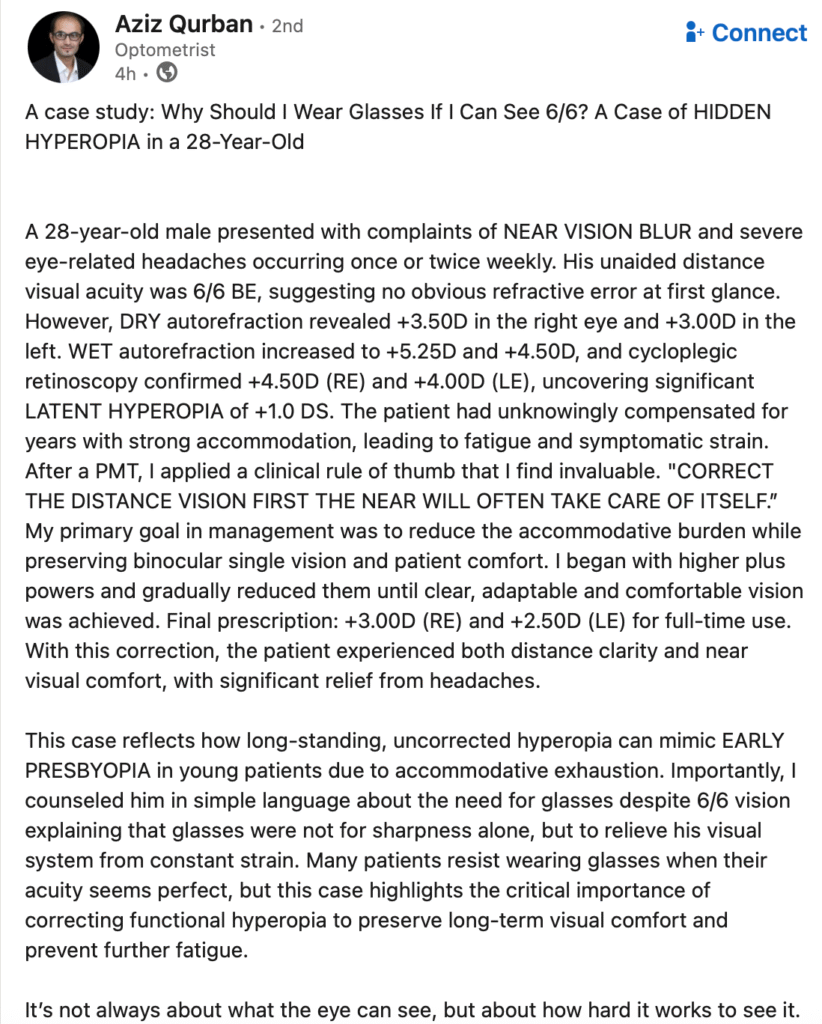
Why Should I Wear Glasses If I Can See 6/6? A Case of HIDDEN HYPEROPIA in a 28-Year-Old
A 28-year-old male presented with complaints of NEAR VISION BLUR and severe eye-related headaches occurring once or twice weekly. His unaided distance visual acuity was 6/6 BE, suggesting no obvious refractive error at first glance.
However, DRY autorefraction revealed +3.50D in the right eye and +3.00D in the left. WET autorefraction increased to +5.25D and +4.50D, and cycloplegic retinoscopy confirmed +4.50D (RE) and +4.00D (LE), uncovering significant LATENT HYPEROPIA of +1.0 DS. The patient had unknowingly compensated for years with strong accommodation, leading to fatigue and symptomatic strain. After a PMT, I applied a clinical rule of thumb that I find invaluable. “CORRECT THE DISTANCE VISION FIRST THE NEAR WILL OFTEN TAKE CARE OF ITSELF.”
My primary goal in management was to reduce the accommodative burden while preserving binocular single vision and patient comfort. I began with higher plus powers and gradually reduced them until clear, adaptable and comfortable vision was achieved. Final prescription: +3.00D (RE) and +2.50D (LE) for full-time use. With this correction, the patient experienced both distance clarity and near visual comfort, with significant relief from headaches.
This case reflects how long-standing, uncorrected hyperopia can mimic EARLY PRESBYOPIA in young patients due to accommodative exhaustion. Importantly, I counseled him in simple language about the need for glasses despite 6/6 vision explaining that glasses were not for sharpness alone, but to relieve his visual system from constant strain. Many patients resist wearing glasses when their acuity seems perfect, but this case highlights the critical importance of correcting functional hyperopia to preserve long-term visual comfort and prevent further fatigue.
It’s not always about what the eye can see, but about how hard it works to see it.


